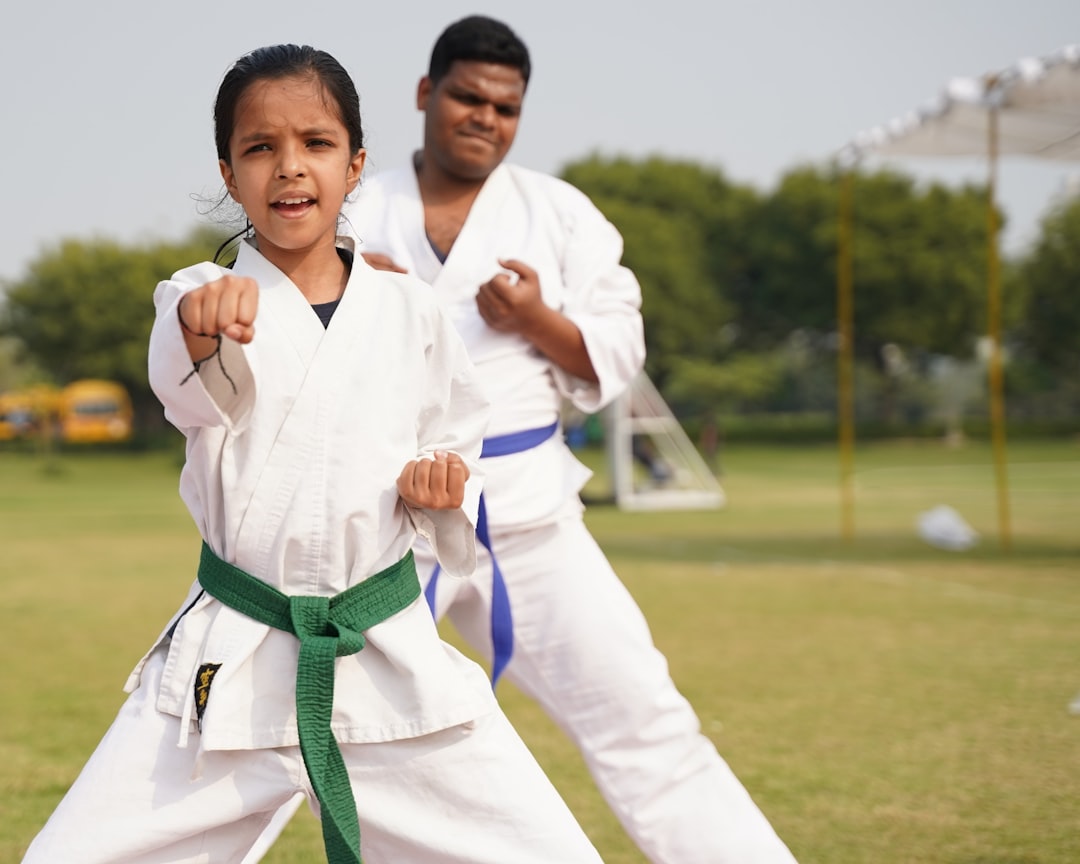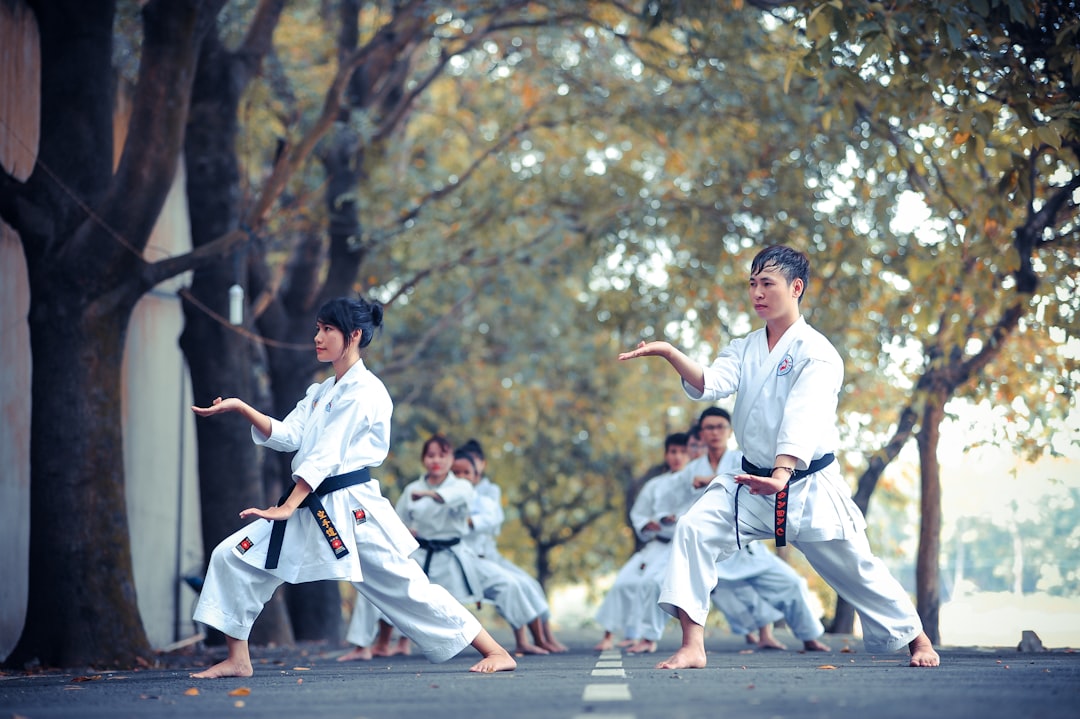The karate gi, or keikogi, is the traditional uniform for karate, stemming from the Japanese phrase gi no kei meaning "martial arts clothing". Designed for both training and competitions, this uniform comprises a heavy cotton robe tied at the waist, loose-fitting trousers, and an obi belt. Evolving alongside karate in Okinawa, Japan, since the 20th century, the gi balances functionality with respect, reflecting the discipline and commitment of practitioners. Its design adapts to modern needs while preserving its historical significance as a symbol of karate's mental and physical dedication.
Karate Uniform Name: Unraveling the Terminology
Karate uniforms, known as ‘gi’ (義), have evolved from their traditional Japanese origins to become a universal symbol of this martial art across the globe. This article delves into the historical context and cultural significance behind karate attire, exploring how it has transformed over time. We will dissect the various components of a karate suit—from the dobori (sleeveless jacket) to the keikogi (shirt), hakama (trousers), and zori (footwear)—and their specific roles in enhancing performance and preserving tradition. Additionally, we’ll expand our scope to include other essential gear worn by practitioners, shedding light on the diverse elements that constitute a karate uniform beyond the gi.
- # Karate Uniform Name: Unraveling the Terminology
- 1. The Historical Context
- – A brief history of karate and its traditional attire.
# Karate Uniform Name: Unraveling the Terminology

The karate uniform is commonly known as a gi or karate gi. But what exactly does this term mean? The word gi is derived from the Japanese phrase gi no kei, which translates to “clothing for martial arts.” This terminology encompasses not just karate but various other martial arts disciplines that require specialized attire. So, when we refer to a ‘karate uniform’, we are essentially talking about the traditional garb worn by practitioners of this ancient combat system.
This clothing is designed with functionality in mind, allowing for freedom of movement and ease during intense physical activity. The gi typically consists of a heavy cotton robe, known as the keikogi, which is tied at the waist with an obi, and loose-fitting trousers or pants. The specific design and materials may vary between styles and schools, but its primary purpose remains to provide comfort and protection during training and competitions.
1. The Historical Context

The karate uniform, known as the gi (着物) in Japanese, has a rich history dating back to the origins of karate itself. The development of this distinctive attire is closely tied to the evolution of martial arts in Okinawa, Japan, where karate was born. Prior to the 20th century, martial artists wore various types of clothing suitable for physical training and combat, but there wasn’t a standardized uniform. With the rise of organized karate schools, or dojos, in the early 1900s, the need for a consistent and functional attire became apparent.
The term gi refers to both the jacket and pants worn together as a set. The design was inspired by traditional Japanese clothing, but adapted to suit the demands of karate training. Made from lightweight, breathable fabrics like cotton, the gi allows for unrestricted movement, making it ideal for intense physical activity. The uniform’s simplicity and practicality have remained consistent over time, reflecting the core values of karate as a discipline focused on both mental and physical development.
– A brief history of karate and its traditional attire.

The traditional attire for karate has evolved alongside the martial art itself. Karate, originating in Okinawa, Japan, during the Ryukyu Kingdom, was initially practiced as a form of self-defense and discipline. The early forms of karate had no specific uniform; practitioners wore comfortable clothing suitable for movement. This changed when karate began to be structured into schools or “dojos” during the 20th century. The modern karate uniform, often referred to as a karate gi or keikogi, became standardized, consisting of lightweight cotton pants (known as hakama) and an oversized shirt (jikan or dobori).
The traditional karate gi is designed for functionality and modesty. The fabric allows for freedom of movement while also covering the body respectfully. This attire signifies the wearer’s commitment to karate, representing their dedication, discipline, and respect for the art. The specific name keikogi, which translates roughly to “training coat,” underscores its role as a tool for learning and mastering karate’s techniques?
The traditional karate uniform, known as a gi or dobori, has evolved from its humble beginnings in ancient Okinawa. This modest attire symbolizes the wearer’s commitment and discipline, reflecting the core values of karate itself. Understanding the term ‘karate uniform name’ encompasses recognizing the historical and cultural significance behind this simple yet powerful garb.
